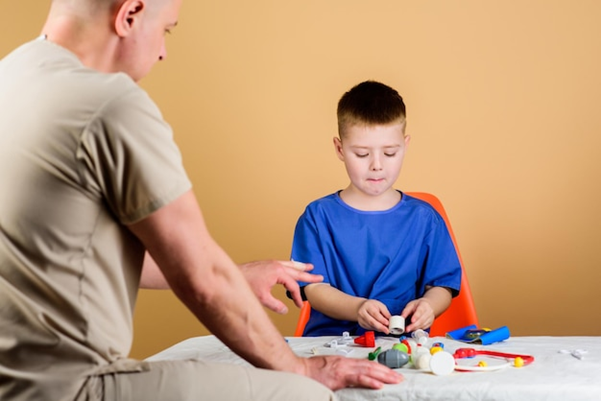Cerebral palsy (CP) is a condition that affects how some children move and coordinate their muscles. It can make simple activities like walking and playing quite challenging. These difficulties can sometimes feel overwhelming for both children and their parents. That’s where physiotherapy for cerebral palsy becomes a beacon of hope.
Physiotherapy plays a crucial role in helping children with cerebral palsy improve their movement and gain more control over their muscles. Through tailored physiotherapy exercises for cerebral palsy, kids can strengthen their muscles, enhance flexibility, and improve their balance. It focuses on maximizing their physical abilities so they can take significant steps towards leading more independent lives.
When children undergoing therapy learn to stand, walk, or even manage everyday tasks by themselves, it gives them a sense of empowerment and boosts their self-esteem. Physiotherapy cerebral palsy home exercises practiced consistently can further foster this independence.
Physiotherapy aids in reducing stiffness and discomfort that children with CP often experience. It targets areas of the body that need the most support. By incorporating play and fun into these exercises, physiotherapists make learning new movements enjoyable, which encourages kids to stay engaged and motivated.
With ongoing advancements in technology, modern approaches like robotic-assisted therapy and virtual realities are being used. These innovative methods further help kids by creating interactive and motivating treatment sessions. This holistic approach not only benefits physical health but also enhances emotional well-being, promising a hopeful and independent future for children with CP.
Understanding and Managing Cerebral Palsy: A Parent’s Guide
Cerebral palsy affects daily routines, like dressing up or eating, because it makes moving parts of the body hard. Since every child is unique, symptoms can vary widely. Early signs often appear under the age of one and may include delays in crawling, sitting, rolling over, or walking.
Navigating daily life with cerebral palsy can be challenging, but parental support is key. To help manage these challenges, pediatric physical therapy cerebral palsy can be a huge help. Physical therapy uses specific techniques to improve movement, ease discomfort, and enhance a child’s quality of life.
Parents might be curious about the differences between occupational therapy vs physiotherapy for cerebral palsy. While both are beneficial, physiotherapy focuses more on improving large muscle movements like sitting and walking. Occupational therapy often looks at developing skills needed for daily activities like dressing or holding a spoon.
Moreover, modern methods like robotic-assisted therapy and virtual reality are revolutionizing how therapy is delivered. These fascinating tools promote learning through engaging and interactive exercises. Cerebral palsy rehabilitation programs often incorporate these techniques to make exercises more fun for children.
For parents, understanding these activities and being involved in the therapy process is essential. This deep involvement can lead to a positive difference in a child’s progression. By choosing the right therapy and staying actively engaged, parents empower themselves with the knowledge to support their child’s journey toward a better, more fulfilling life.
Early Intervention and Parental Involvement: Keys to Success
Early intervention in physiotherapy is like planting a seed early on. Cerebral palsy physical therapy techniques, when started young, can lead to long-term improvements in children.
Starting physiotherapy for cerebral palsy as early as possible gives kids a better chance to improve their skills like walking, playing, and even communicating. Identifying potential signs early helps in setting up a precise and effective intervention plan. This plan helps parents and therapists focus on areas that need the most attention.
Parents play a pivotal role in supporting their child’s therapy journey. They can incorporate daily routines and physiotherapy cerebral palsy home exercises into family time. These exercises help build strength and encourage movement. They could involve playful activities, like making a game out of standing or balancing tasks, ensuring the therapy doesn’t feel like a chore for the child.
The benefits go beyond physical development. Parents who engage through play and exercise find a deep emotional connection with their children. It boosts the child’s confidence and reassures them that they are supported every step of the way. This emotional encouragement is just as important as the physical exercises.
Active involvement also motivates children to thrive and remain consistent in their therapeutic practices. The combination of exercise, play, and emotional support forms a comprehensive approach, ensuring a well-rounded progress template. As a parent, being engaged means being part of every success story your child creates.
Stories of Success: Real-Life Impact of Physiotherapy on Independence
There are incredible stories of success showcasing how dedication and physiotherapy for cerebral palsy have transformed the lives of many children.
Take the story of Mia, a young girl who began her therapy journey at age two. Initially struggling with balance and coordination, she now walks with minimal assistance, thanks to the tailored cerebral palsy gait training she received. Such training focused on foot and leg exercises, strengthening the muscles necessary for walking.
Another inspiring story is that of Jake, who benefited from hydrotherapy cerebral palsy sessions. This water-based therapy helped Jake develop new muscle skills as the water provided support and resistance simultaneously, making movements easier on his joints.
These stories are not just anecdotal; data reveals significant improvements in children’s self-sufficiency and overall well-being. Therapist-led evaluation and regular check-ins tracked progress in mobility, confirming that physiotherapy leads to tangible developments in children.
Technological advancements are also making a name for themselves in improving therapy outcomes. Devices and programs developed for cerebral palsy rehabilitation programs now effectively track and enhance therapy exercises, leading to improved outcomes for children.
Together with parents, therapists, and available cutting-edge tools, the achievable transformation in skills and independence for children with cerebral palsy is remarkable. These stories serve as a beacon of hope and a testament to the power of persistent, dedicated efforts of parents and healthcare professionals, rallying together for a better future.


